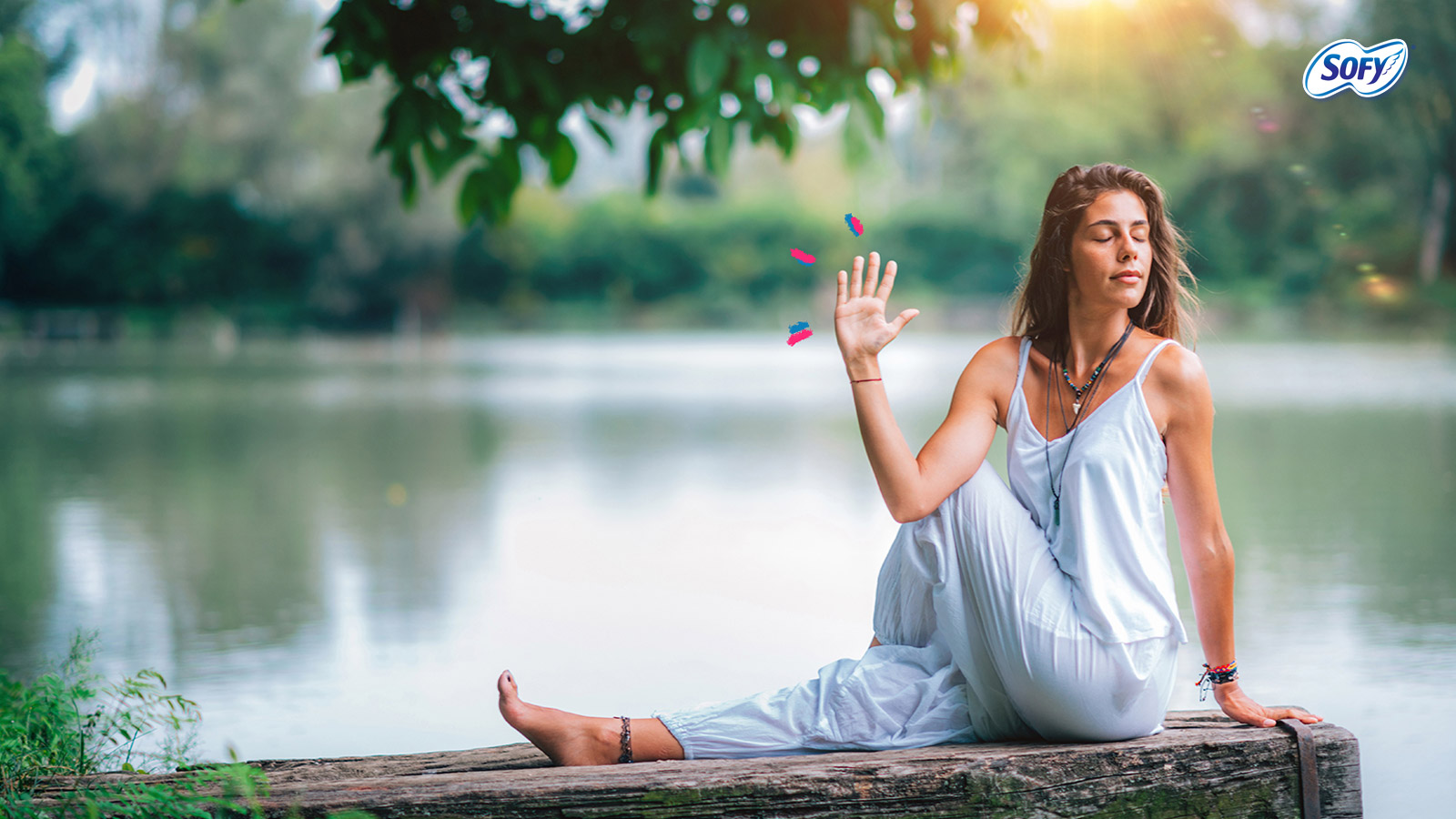If you experience severe PMS symptoms like cramps, bloating, fatigue, headaches, anxiety, or back pain every month, a regular yoga practice can help. Yoga improves blood circulation, revitalizes cells with oxygen, reduces stress, and strengthens immunity.
Practicing yoga also releases endorphins, which lift your spirits and promote a positive mindset.
Recommended Practices
Incorporate Surya Namaskar and gentle inversions like Sarvangasana for overall health. During your period, keep yoga soft and restorative—avoid intense inversions. Always warm up before practicing and finish with 5-10 minutes of Savasana for deep relaxation.
Yoga Postures for PMS and Menstrual Comfort
Cat-Cow (Marjaryasana-Bitilasana)
This simple stretch alleviates stress from menstrual cramps and back pain.
- Start in a tabletop position with wrists under shoulders and knees under hips.
- Inhale and arch your spine (Cow Pose), lifting your head.
- Exhale and round your spine (Cat Pose), drawing your chin to your chest.
- Repeat for 5 breaths in each position.
Ardha Matsyendrasana (Seated Twist)
A gentle twist beneficial for abdominal and reproductive organs.
- Sit with legs stretched forward.
- Bend the left leg and place the foot near the right hip; cross the right foot over the left knee.
- Place your right hand behind and twist to the right.
- Hold for 8–10 breaths, keeping the spine straight.
- Return to center and repeat on the other side.
Paschimottanasana (Seated Forward Bend)
This posture stretches the spine, especially the lower back.
- Sit with legs extended.
- Inhale and raise your arms, lengthening the spine.
- Exhale and fold forward, resting hands on feet or ankles.
- For added comfort during menstruation, place a bolster under your torso.
- Hold for 8–10 breaths or longer.
Supta Baddha Konasana (Supported Bound Angle Pose)
A restorative pose that releases tension in the back, pelvis, and inner thighs.
- Lie back on a bolster or stacked blankets.
- Bring the soles of your feet together, letting knees drop outward.
- Support the forearms on the floor and relax.
- Close your eyes and breathe deeply for 5 minutes.
Balasana (Child’s Pose)
A deeply relaxing posture for comfort and stress relief.
- Kneel and bring big toes together, spreading knees slightly.
- Sit back on your heels and stretch arms forward.
- Rest your forehead on the floor or a cushion.
- Hold for 8–10 breaths.
Supine Twist (Supta Matsyendrasana Twist)
Releases tension and stiffness while promoting ease in the body.
- Lie on your back with knees bent and feet flat.
- Extend arms to the sides.
- Lower knees to the left, head turned right, supporting knees with a pillow.
- Hold for 10 breaths, then switch sides.
Ending Your Practice
Finish your yoga session with 5–10 minutes of Savasana. You can use a guided Savasana video to help unwind. This gentle practice alleviates menstrual discomfort and PMS symptoms, leaving you feeling relaxed, joyful, and rejuvenated.
FAQ’s
Which yoga poses are recommended for easing menstrual cramps?
Sofy recommends postures like Cat-Cow (Marjaryasana-Bitilasana) to gently stretch the spine, which helps alleviate menstrual cramps and relieve lower back pain.
Why is Ardha Matsyendrasana (Seated Twist) helpful during PMS?
Ardha Matsyendrasana, or the Seated Twist, stimulates and massages the abdominal and reproductive organs. This twist aids in releasing tension in the pelvic region, helping to reduce bloating and discomfort.
How does Paschimottanasana (Seated Forward Bend) ease PMS-related back pain?
In Paschimottanasana, you sit with your legs extended and gently fold forward. This posture stretches the lower back and spine, promoting flexibility and easing tension that often comes with PMS-related back aches. A bolster under the torso can make it more comfortable.
What is Supta Baddha Konasana, and what PMS symptoms does it relieve?
Supta Baddha Konasana (Supported Bound Angle Pose) involves lying back on a bolster or blankets with the soles of the feet together and knees dropping outwards. This restorative pose releases tension in the pelvis, thighs, and back, promoting calmness and reducing physical stress during PMS.
How does Balasana (Child’s Pose) help with PMS stress and fatigue?
Balasana, or Child’s Pose, is deeply relaxing: you kneel, sit on your heels, stretch your arms forward, and rest your forehead down. This gentle posture helps relieve mental stress and physical tension, offering a moment of rest during PMS.
What is the benefit of doing a Supine Twist (Supta Matsyendrasana) for PMS?
The Supine Twist involves lying on your back with bent knees and gently lowering them to one side, while your head turns the other way. It releases tension in the spine, improves circulation, and helps ease stiffness and discomfort in the lower back and hips during PMS.
Why should you finish PMS-yoga practice with Savasana?
Sofy advises ending your yoga session with 5–10 minutes of Savasana. This relaxation posture helps your body absorb the calming benefits of the practice, allowing stress reduction, deep rest, and emotional balance — particularly important during PMS.
Can gentle inversions be practiced during PMS?
While Sofy recommends gentle yoga, it specifically cautions against “intense inversions” during menstruation. The article suggests focusing on more restorative and forward-bend postures instead, to avoid overstressing the body when PMS symptoms are active.
How long should each yoga posture be held to ease PMS symptoms?
According to Sofy, most poses should be held for 8–10 breaths, though restorative poses like Supta Baddha Konasana can be held longer (e.g., 5 minutes) to deeply relax the body and relieve PMS tension.

